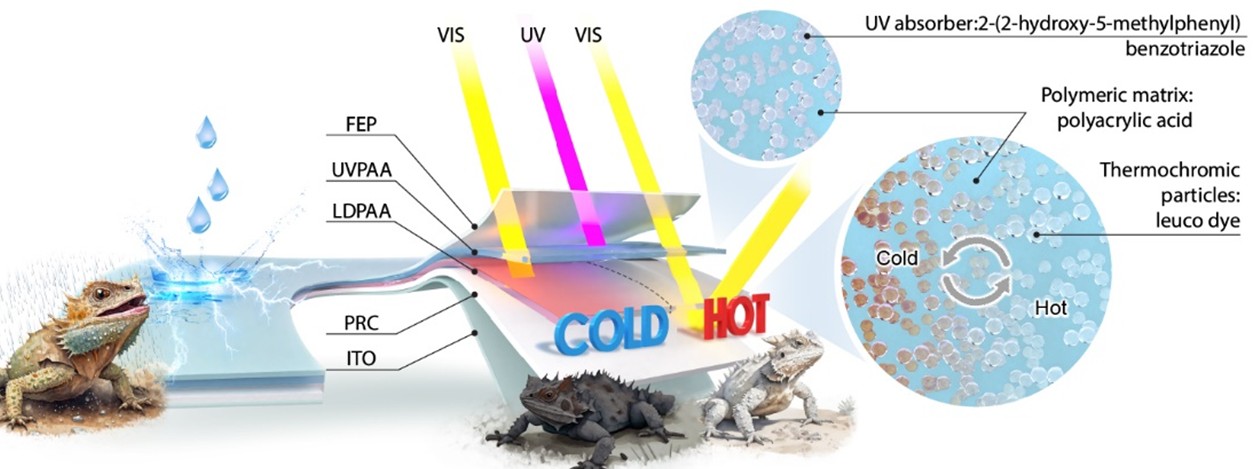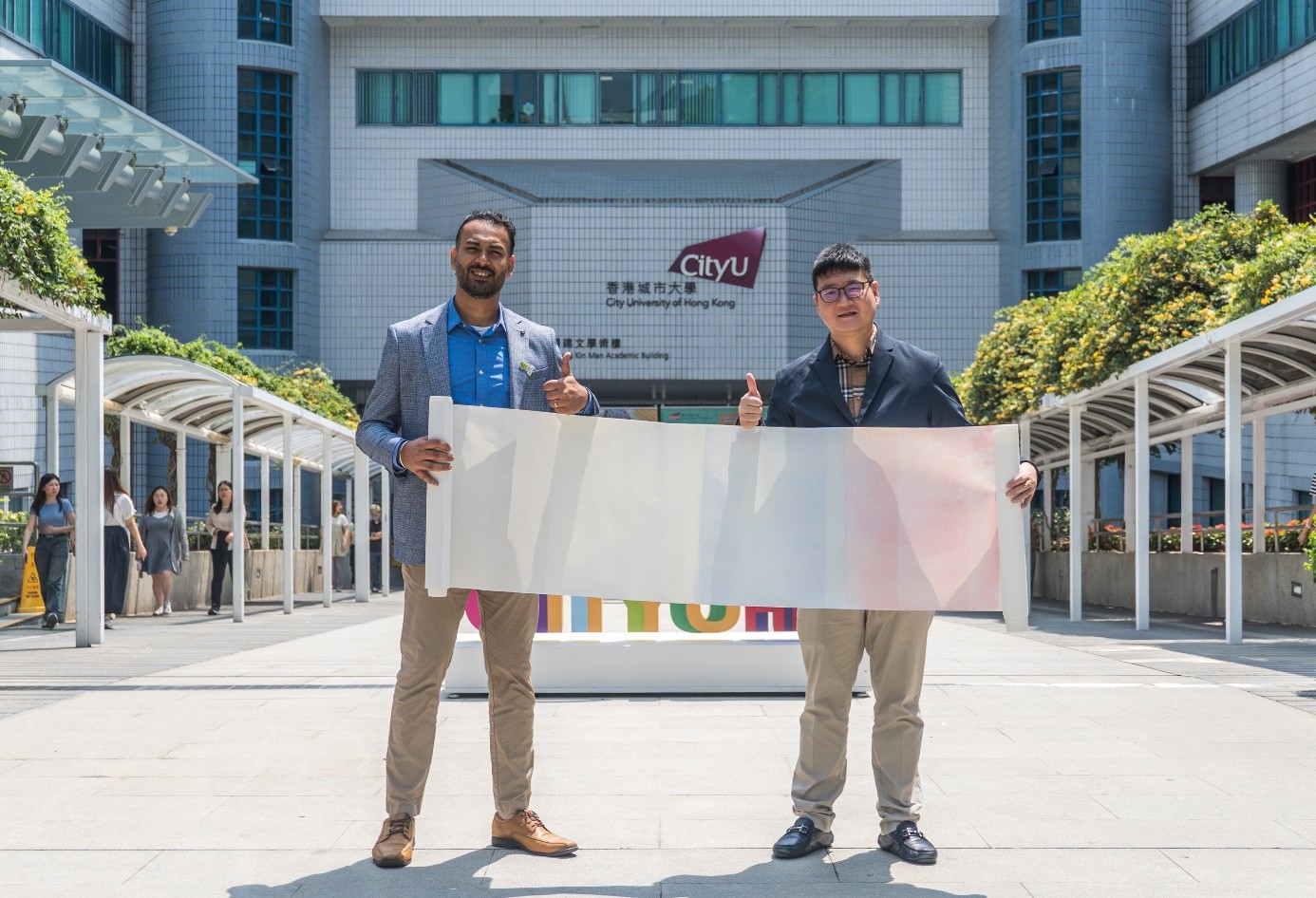Prof. Edwin Chi-Yan TSO Leads Breakthrough in Passive Radiative Cooling with Bio-Inspired Smart Metafilm Published in Science Advances
Researchers from School of Energy and Environment (SEE) at City University of Hong Kong (CityUHK) have made a major advancement in passive radiative cooling technology. Their latest study, "Bio-inspired Metafilms for All-Weather Energy Harvesting: Adaptive Thermal Regulation and Raindrop Electricity Generation", was published in the prestigious journal Science Advances.
The study was led by Prof. Edwin Chi Yan TSO, Associate Dean (Internationalisation and Outreach) and Associate Professor at SEE. The co-first authors were PhD student Ms. Siru CHEN, Global Research Assistant Professor, Prof. Kaixin LIN, and SEE alumnus Dr. Sai LIU. Life cycle analysis was conducted with support from Prof. Shauhrat S. CHOPRA, associate professor at SEE, CityUHK. This research was conducted as a collaborative effort in partnership with Tsinghua University, the Chinese Academy of Sciences, and the Hong Kong University of Science and Technology.

Prof. Edwin Chi-Yan TSO, Prof. Shauhrat S. CHOPRA, and Prof. TSO’s research team members at CityUHK. (From left: Mr. Ze LI, Dr. Chuyao WANG, Ms. Siru CHEN, Prof. Shauhrat S. CHOPRA, Prof. Edwin Chi-Yan TSO, Prof. Kaixin LIN, Mr. Lin LIANG, Dr. Tsz Chung HO)

This latest breakthrough builds on the researchers' previous publication on passive radiative cooling ceramics in the journal Science. The new study presents further advancements in passive radiative cooling technology, including adaptive thermal regulation and the ability to generate electricity from raindrops. Inspired by the skin structure regulation mechanism of the Phrynosoma lizard, this study successfully developed a bio-inspired "smart metafilm" that integrates multifunctional capabilities of cooling, heating, and electricity generation. This innovative material achieves several breakthroughs in the fields of thermal regulation and energy harvesting. It can autonomously switch between cooling and heating modes in response to environmental temperature changes and harvest electricity from raindrop kinetic energy during rainy conditions, overcoming traditional limitations of passive radiative cooling materials, which typically only provide cooling and are effective mainly under clear skies.
The core structure of the material is a multilayer composite film that synergistically integrates a thermochromic regulation unit, an infrared radiation layer, and a raindrop energy harvesting module. With an optical contrast of up to 63% in the visible spectrum, the material enables both sub-ambient cooling and above-ambient heating, with the switching triggered automatically by ambient temperature variations. Additionally, during rainfall, the impact of raindrops can generate instantaneous voltages as high as 208 V. The metafilm demonstrates excellent all-weather thermal management and energy harvesting capabilities, along with good flexibility, weather resistance, and scalability, making it suitable for a wide range of practical applications, such as building envelopes and wearable devices.
As a pioneer in the field of passive radiative cooling, Prof. TSO’s team has achieved a significant leap from single-function cooling to an intelligent energy system with this advancement. This research not only provides a novel strategy for the design and integration of multifunctional energy materials but also offers critical technological support for achieving future carbon neutrality goals in buildings and constructing smart energy management systems.

Structural design of the bio-inspired smart metafilm.

Prof. Edwin Chi Yan TSO (right) and Prof. Shauhrat S. CHOPRA (left)
For more details, the full paper can be accessed at https://www.science.org/doi/10.1126/sciadv.adu2895